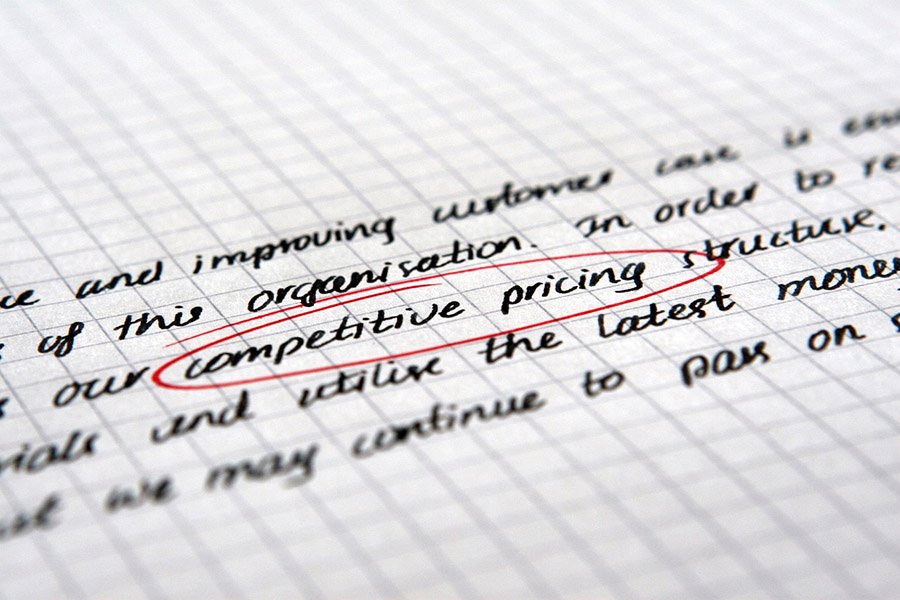Pricing is a critical aspect of any business strategy, directly impacting profitability, market positioning, and customer perception. An effective pricing strategy can be the difference between a thriving business and one that struggles to stay afloat. With the right approach, businesses can attract more customers, increase sales, and maximize profits.
In this article, we will explore the top 10 pricing strategies that businesses can use to optimize their pricing approach. Whether you are a startup looking to gain market share or an established company aiming to maintain your competitive edge, these strategies offer valuable insights and practical techniques to help you achieve your goals.
1. Cost-Plus Pricing
Cost-plus pricing, also known as markup pricing, is a straightforward and widely used strategy. It involves calculating the total cost of producing a product or service and then adding a specific markup percentage to determine the selling price.
Pros:
- Simple to calculate and implement.
- Ensures that all costs are covered, including fixed and variable expenses.
- Provides a consistent profit margin.
Cons:
- Ignores market conditions and competitor pricing.
- May not reflect the product’s perceived value to customers.
- Can lead to pricing that is too high or too low compared to the market.
Example: A furniture manufacturer calculates that the total cost to produce a chair, including materials, labor, and overhead, is $50. By adding a 30% markup, the selling price is set at $65.
Cost-plus pricing is commonly used in industries with stable production costs and predictable demand, such as manufacturing and retail. However, businesses should be cautious not to rely solely on this strategy, as it doesn’t account for external factors like competitor pricing or customer value perception.
2. Competitive Pricing
Competitive pricing, also known as market-oriented pricing, involves setting prices based on the prices of similar products or services offered by competitors. This strategy requires businesses to conduct thorough market research to understand the pricing landscape and position their offerings accordingly.
How to Analyze Competitors’ Prices:
- Identify direct and indirect competitors.
- Monitor competitors’ pricing for similar products or services.
- Assess the value proposition and differentiation of competitors’ offerings.
- Consider the target market and customer preferences.
Advantages:
- Helps businesses remain competitive in the market.
- Can attract price-sensitive customers.
- Reduces the risk of pricing too high or too low compared to competitors.
Drawbacks:
- May lead to price wars and reduced profit margins.
- Ignores the unique value and differentiation of a business’s products or services.
- Can result in a race to the bottom, where prices are continually lowered.
Example: A new online retailer selling electronics might set its prices slightly lower than those of established competitors to attract price-sensitive customers and gain market share.
Competitive pricing is particularly effective in highly competitive markets where customers have many options. However, businesses should strive to differentiate their offerings and not solely compete on price, as this can erode profitability over time.

3. Value-Based Pricing
Value-based pricing focuses on setting a price based on the perceived value of the product or service to the customer rather than on the cost of production. This strategy requires a deep understanding of customer needs, preferences, and the benefits they derive from the product.
Steps to Implement Value-Based Pricing:
- Understand Customer Needs: Conduct market research to identify what customers value most about the product.
- Assess Perceived Value: Determine how much customers are willing to pay based on the perceived benefits.
- Differentiate Offering: Highlight unique features and benefits that justify the price.
- Communicate Value: Clearly communicate the value proposition to customers.
Benefits:
- Can lead to higher profit margins.
- Aligns pricing with customer expectations and willingness to pay.
- Encourages a focus on quality and differentiation.
Challenges:
- Requires extensive market research and customer insights.
- Can be difficult to implement in highly competitive markets.
- Risk of overestimating the perceived value.
Example: A software company offers a premium version of its product with advanced features that significantly increase productivity for users. By focusing on the enhanced value provided, the company sets a higher price point than competitors with basic features.
Value-based pricing is particularly effective for innovative products, luxury goods, and services where the perceived benefits are substantial and distinguishable from competitors.
4. Penetration Pricing
Penetration pricing involves setting a low price for a new product or service to quickly attract customers and gain market share. The initial low price is intended to encourage customers to try the product, with the goal of increasing the price once a customer base is established.
When to Use Penetration Pricing:
- Launching a new product in a competitive market.
- Introducing a product with low brand recognition.
- Aiming to capture a large market share quickly.
Risks:
- May lead to initial financial losses.
- Risk of attracting price-sensitive customers who may not remain loyal when prices increase.
- Competitors may respond with their own price cuts.
Benefits:
- Rapidly increases market penetration and customer acquisition.
- Can create a strong market presence and brand awareness.
- Discourages potential competitors from entering the market due to low-profit margins.
Example: A new streaming service offers an introductory subscription price significantly lower than established competitors to attract subscribers. Once a substantial subscriber base is built, the service gradually increases the price while adding more content and features.
Penetration pricing is effective for new market entrants and businesses looking to disrupt existing markets. However, companies must have a clear plan for transitioning to higher prices without losing customers.
5. Price Skimming
Price skimming involves setting a high initial price for a new or innovative product and then gradually lowering the price over time. This strategy targets early adopters who are willing to pay a premium for the latest technology or unique features.
When and Why to Use Price Skimming:
- Launching a highly anticipated or innovative product.
- Targeting customers who value being the first to own new products.
- Recouping research and development costs quickly.
Pros:
- Maximizes profits from early adopters.
- Creates an impression of exclusivity and high value.
- Allows for gradual price adjustments based on market response.
Cons:
- May alienate price-sensitive customers.
- Risk of competitors quickly launching similar products at lower prices.
- Requires careful management of price reductions to maintain brand reputation.
Example: A smartphone manufacturer releases a new flagship model with cutting-edge features at a premium price. Over time, as the product lifecycle progresses and newer models are introduced, the price is gradually reduced to appeal to a broader audience.
Price skimming is particularly effective for technology products, luxury goods, and industries where innovation drives consumer demand. It allows companies to maximize profits from different customer segments over the product’s lifecycle.

6. Psychological Pricing
Psychological pricing leverages customers’ emotional responses to certain price points and structures to encourage purchases. This strategy taps into the way customers perceive and interpret prices, often making them feel they are getting a better deal.
Common Techniques:
- Charm Pricing: Setting prices slightly below a round number (e.g., $9.99 instead of $10.00).
- Odd-Even Pricing: Using odd numbers (e.g., $19.95) to suggest a bargain and even numbers (e.g., $20.00) to imply quality.
- Price Anchoring: Showing a higher original price next to a discounted price to highlight the savings.
- Bundling and Discounts: Offering a lower price for a bundle of products compared to buying each individually.
Advantages:
- Can significantly boost sales by influencing customer perception.
- Creates a sense of urgency or value.
- Effective in retail and e-commerce environments.
Potential Pitfalls:
- Overuse can lead to customer skepticism.
- May not work as well for high-involvement purchases where customers scrutinize prices more closely.
- Requires ongoing analysis and adjustment.
Example: A clothing retailer prices a shirt at $49.99 instead of $50.00 to make it appear more affordable. Additionally, they offer a discount if the customer buys two shirts, enhancing the perceived value.
Psychological pricing is particularly effective in consumer markets where small price differences can impact purchasing decisions. It leverages cognitive biases to drive sales and enhance customer perception of value.
7. Bundle Pricing
Bundle pricing involves selling multiple products or services together at a single price, often at a discount compared to purchasing each item individually. This strategy encourages customers to buy more by offering them perceived savings and convenience.
How to Create Effective Product Bundles:
- Combine complementary products or services that naturally go together.
- Ensure the bundled price offers clear savings compared to individual purchases.
- Highlight the convenience and added value of the bundle.
- Test different bundle combinations to find the most appealing offers.
Benefits:
- Increases average order value.
- Reduces inventory of slow-moving items by pairing them with popular products.
- Enhances customer satisfaction through perceived value and convenience.
Challenges:
- May reduce profit margins if not priced correctly.
- Requires careful selection of bundled items to avoid excess inventory.
- Can complicate pricing structures and require more marketing effort.
Example: A software company offers a bundle of its flagship productivity tools, including a word processor, spreadsheet application, and presentation software, at a discounted price compared to buying each tool separately. This encourages customers to purchase the entire suite rather than individual products.
Bundle pricing is effective in various industries, including technology, retail, and services, where complementary products can be combined to provide additional value to customers and drive higher sales volumes.
8. Premium Pricing
Premium pricing, also known as prestige pricing, involves setting a high price to create a perception of superior quality, exclusivity, and status. This strategy targets customers who are willing to pay more for premium products or services and aligns with luxury and high-end market positioning.
Strategies to Justify and Maintain Premium Pricing:
- Quality and Exclusivity: Ensure the product or service offers exceptional quality, unique features, or limited availability.
- Brand Image: Build a strong, reputable brand that customers associate with luxury and prestige.
- Customer Experience: Provide exceptional customer service and support to enhance the perceived value.
- Marketing: Use high-end marketing and advertising to reinforce the premium positioning.
Pros:
- Generates higher profit margins.
- Attracts customers who value quality and exclusivity.
- Enhances brand image and differentiation.
Cons:
- Limits market size to affluent customers.
- Requires continuous investment in maintaining quality and brand reputation.
- Higher risk if market conditions change or competitors offer similar quality at lower prices.
Example: A luxury car manufacturer prices its vehicles significantly higher than mainstream brands, emphasizing superior craftsmanship, advanced technology, and exclusivity. This attracts customers who are willing to pay a premium for a prestigious driving experience.
Premium pricing is particularly effective for luxury goods, high-end services, and brands that focus on exclusivity and superior quality. It helps businesses establish a strong market presence and attract a loyal customer base willing to pay for premium experiences.
9. Economy Pricing
Economy pricing, also known as budget pricing, involves setting low prices to attract cost-conscious customers. This strategy focuses on minimizing production and marketing costs to offer basic products or services at the lowest possible price.
Target Market:
- Price-sensitive customers looking for basic, no-frills products.
- Consumers who prioritize cost savings over brand loyalty or premium features.
Strategies to Maintain Profitability:
- Cost Control: Streamline operations to reduce production and overhead costs.
- High Volume: Compensate for low margins with high sales volume.
- Minimal Marketing: Rely on word-of-mouth and low-cost marketing channels.
Advantages:
- Attracts a large customer base due to affordability.
- Effective in markets with high price competition.
- Can build brand loyalty among budget-conscious consumers.
Drawbacks:
- Low profit margins require careful cost management.
- Difficult to differentiate products from competitors.
- May not appeal to customers looking for quality or premium features.
Example: A discount grocery store offers essential food items and household products at significantly lower prices than traditional supermarkets by keeping overhead costs low and focusing on high-volume sales.
Economy pricing is particularly effective in the retail and consumer goods sectors, where cost savings are a major driver of purchasing decisions. It appeals to a broad audience but requires efficient operations to maintain profitability.
10. Dynamic Pricing
Dynamic pricing involves adjusting prices in real-time based on market demand, customer behavior, and competitive factors. This strategy uses algorithms and data analytics to optimize pricing for maximum revenue and profitability.
Industries Where Dynamic Pricing is Effective:
- Travel and Hospitality: Airlines and hotels adjust prices based on demand, seasonality, and booking patterns.
- E-commerce: Online retailers use dynamic pricing to respond to competitor pricing, stock levels, and customer browsing behavior.
- Ride-Sharing: Services like Uber and Lyft adjust prices based on demand and supply of drivers in real-time.
Pros:
- Maximizes revenue by capturing the highest price customers are willing to pay.
- Responds quickly to market changes and competitor actions.
- Optimizes inventory and capacity utilization.
Cons:
- Requires sophisticated technology and data analytics.
- Can lead to customer dissatisfaction if prices fluctuate too frequently or appear unfair.
- Risk of price wars if competitors also use dynamic pricing.
Example: An online retailer uses dynamic pricing software to adjust the prices of its products based on competitor pricing, demand trends, and stock levels. This ensures that prices remain competitive while maximizing revenue.
Dynamic pricing is particularly effective in industries with fluctuating demand and competitive pressures. It allows businesses to optimize pricing strategies in real-time, enhancing profitability and market responsiveness.
Conclusion
Pricing strategies are a crucial component of a business’s overall strategy, directly impacting profitability, market positioning, and customer perception. By understanding and implementing various pricing strategies, businesses can tailor their approach to align with their goals, market conditions, and customer expectations.
From the straightforward approach of cost-plus pricing to the sophisticated techniques of dynamic pricing, each strategy offers unique benefits and challenges. Selecting the right pricing strategy involves careful consideration of factors such as production costs, competitor pricing, customer value perception, and market dynamics.
In summary, the top 10 pricing strategies discussed in this article are:
- Cost-Plus Pricing: Simple and ensures cost coverage but ignores market conditions.
- Competitive Pricing: Keeps prices aligned with competitors but can lead to price wars.
- Value-Based Pricing: Aligns with customer perceptions but requires deep market insights.
- Penetration Pricing: Attracts customers quickly but may lead to initial losses.
- Price Skimming: Maximizes early profits but may alienate price-sensitive customers.
- Psychological Pricing: Influences customer perception but requires careful use.
- Bundle Pricing: Increases sales through value perception but can complicate pricing.
- Premium Pricing: Builds a luxury brand but limits the customer base.
- Economy Pricing: Attracts cost-conscious customers but relies on high volume.
- Dynamic Pricing: Optimizes prices in real-time but needs advanced technology.
By experimenting with and combining these strategies, businesses can find the optimal pricing approach that drives growth, enhances customer satisfaction, and ensures long-term success. Remember, the key to effective pricing is understanding your market, your customers, and your unique value proposition.








Add comment